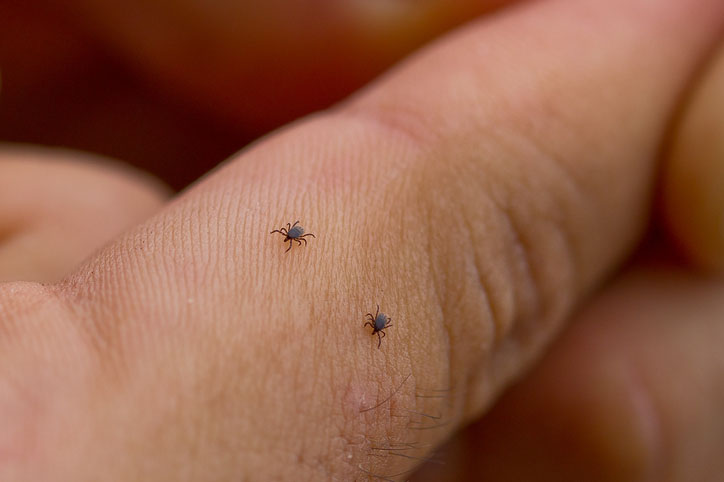Vaccination Program for Horses
- Health-Management Interaction: Horses
- Overview of Health-Management Interaction: Horses
- Housing of Horses
- Pasture for Horses
- Nutrition of Horses
- Foot Care of Horses
- Dental Care of Horses
- Parasite Control in Horses
- Vaccination Program for Horses
- Perinatal Mare and Foal Care
The goal of vaccination is to develop and maintain both individual and herd immunity against infectious diseases. Commercial vaccines are available for rabies, encephalomyelitis (Eastern, Western, and Venezuelan), tetanus, influenza, equine herpesviruses 1 and 4, botulism, equine ehrlichiosis (Potomac horse fever), equine viral arteritis, rotavirus, West Nile virus, and Streptococcus equi (strangles). Vaccination programs are formulated based on the animal’s age, use, and level of exposure. Broodmare vaccination is important to provide active immunity for the mare and passive immunity for the foal via transfer of colostral antibodies. Vaccination guidelines for foals have been modified because of the interference of maternal antibodies with the initial vaccination response. Sources such as the American Association of Equine Practitioners can provide the most current equine vaccination recommendations for horses in the USA.
The following vaccination recommendations assume that foals are born to vaccinated mares and have absorbed adequate colostral antibodies with IgG levels >800 mg/dL.
Foals with failure of passive antibody transfer (ie, IgG levels <200 mg/dL) and/or foals born to unvaccinated mares can receive their initial vaccination for equine herpesvirus 1 and 4, tetanus, and Eastern and Western equine encephalomyelitis beginning at 3–4 mo of age, followed by a second dose 4–6 wk later and a third dose at 10–12 mo of age. These foals can receive their first dose of rabies vaccine at 3–4 mo of age, followed by a booster at 12 mo. Influenza vaccination can be started at 6 mo of age. Foals born to mares that have never been exposed to or vaccinated against West Nile virus can receive their first vaccination at 3–5 mo of age.
Tetanus:
Clostridium tetani is present in all parts of the world. Tetanus occurs most commonly when wounds become contaminated with the organism from the soil. Vaccination is recommended for all horses and ponies on an annual basis. A horse with an unknown vaccination status that sustains an injury should receive a dose of tetanus antitoxin along with a dose of tetanus toxoid. A second dose of toxoid should be given 4 wk later. Foals from vaccinated mares should be given a three-dose series at 6, 7, and 9 mo of age. Foals from unvaccinated mares should receive tetanus toxoid at 3, 4, and 6 mo of age. Whenever a vaccinated horse experiences a serious wound, a tetanus booster may be indicated.
Equine Herpesvirus 1 and 4 (Rhinopneumonitis):
Two types of equine herpesviruses vaccine are available, EHV-1 and EHV-4. The EHV-1 virus is the primary cause of abortion and neurologic disease in horses. The EHV-4 virus is the primary cause of respiratory infections, especially in young horses. The control of rhinopneumonitis is by a combination of vaccination and good management practices. To prevent abortion, a killed EHV-1 vaccine should be administered to pregnant mares at 3, 5, 7, and 9 mo of gestation. Respiratory disease is best prevented using a combination vaccine of EHV-1 and EHV-4. There is no evidence that vaccination protects against the neurologic form of the disease. Vaccine recommendations for foals are three doses every 4 wk starting at 6 mo of age, and a booster at 1 yr of age. Pleasure and performance horses should be vaccinated every 3–6 mo, depending on the risk of exposure. Broodmares should have an EHV-4 vaccination 2–4 wk before foaling to ensure the availability of colostral immunity.
Encephalitis:
Eastern equine encephalitis (EEE) virus has a wide distribution. This includes the eastern USA, Central and South America, and eastern Canada. In the USA, EEE is seen primarily in the southeastern states but has been reported in all states east of the Mississippi River. EEE in horses is nearly always fatal regardless of treatment. Infected horses usually become comatose, seizure, and die in 36–48 hr.
The virus of Western equine encephalitis (WEE) is primarily located in the western USA. In recent years, reports of WEE have not been common, probably as a result of adequate vaccination programs. The virus is not as pathogenic as EEE, and animals infected with WEE have a greater chance of survival. Mortality is usually 50%.
Venezuelan equine encephalitis (VEE) virus causes outbreaks of disease in horses in Mexico, Central and South America, and occasionally the southern USA. The VEE vaccine is a single vaccine or in combination with EEE and WEE. Its need is limited to those horses traveling to or located in endemic areas.
West Nile virus (WNV) disease is considered a zoonotic disease similar to the encephalitis viruses. The bird population allows for maintenance of the virus, which is then transmitted by mosquitoes to both people and horses. There is very little risk of disease from any infected horses. Vaccination protocols for broodmares, foals, and adult horses are the same as those for Eastern and Western encephalitis. Combination vaccines that include EEE, WEE, and WNV are available.
Influenza:
Influenza is one of the most frequent causes of viral respiratory disease in horses and is highly contagious among susceptible horses. Therefore, vaccination is recommended for all foals, broodmares, and horses at risk of exposure, usually as a result of showing, racing, or shipping. Young foals from vaccinated mares, because of maternal antibodies, should be vaccinated at 9, 10, and 12 mo of age. Foals from unvaccinated mares should be vaccinated earlier. The intranasal vaccine can be used every 6 mo in young, susceptible performance horses 2–4 yr old. A vaccination is recommended every 6 mo for horses exposed to other horses at equine events.
Rabies:
Signs of rabies include the inability to eat or drink, disorientation, and incoordination. Rabies is fatal, and also poses a health risk to those who handle infected horses. Prevention in horses is primarily via vaccination. Broodmares should be vaccinated 4–6 wk before foaling. Foals from vaccinated mares should be vaccinated at 6 and 7 mo of age and again at 12 mo of age. Foals from unvaccinated mares should be vaccinated at 3, 4, and 12 mo of age. All adult horses should be vaccinated annually.
Potomac Horse Fever:
Potomac horse fever (equine monocytic ehrlichiosis, equine ehrlichial colitis) is caused by Neorickettsia risticii. Vaccination is recommended in endemic areas, such as near freshwater streams, rivers, ponds, and heavily irrigated pastures. Annual boosters in the spring are recommended. Pregnant mares should receive a booster before foaling. Although the vaccine may lessen the impact of the disease, it appears not to prevent abortion in pregnant mares.
Botulism:
Equine botulism is mostly seen in the Mid-Atlantic area of the United States, but the disease has also been reported worldwide. In the USA, the most common types are B and C botulism, although type A has been reported in the western USA. The spores of Colostridium botulinum are found in the soil and are resistant to light, drying, and heat. The Type B vaccine gives good protection in adult horses. Adult horses and broodmares in areas where botulism is a potential hazard should receive initially three doses at 30-day intervals and then annual boosters. Foals from vaccinated mares in endemic areas should be vaccinated at 2, 3, and 4 mo of age, because colostral immunity does not always occur. Foals from unvaccinated mares should be vaccinated at 2, 4, and 8 wk of age. The use of Type B vaccine in areas where Type C occurs has uncertain results.
Streptococcus equi Infection:
Streptococcus equi infection (equine strangles, equine distemper) can be highly contagious. Use of the IM or intranasal vaccine is recommended only in those situations or on premises where the disease has been a problem. The IM vaccine involves three injections administered 2–4 wk apart, starting at 4 mo of age in foals, with a booster at 12 mo of age. If the intranasal vaccine is used, vaccination can begin at 6–9 mo of age, with a second dose given 3–4 wk later and a third dose administered at 12 mo of age. Adult horses, if in potential disease situations, should receive an annual vaccination. Broodmares on endemic farms should receive an annual booster using the IM vaccine 4–6 wk before foaling. Because of the increased risk of inducing immune-mediated purpura hemorrhagica, horses with titers to the SeM surface protein of S equi in excess of 1:1,600 may not need to be vaccinated.
Rotavirus:
Foal diarrhea as a result of rotavirus infection can be a severe problem on some breeding farms. Single cases or a farm outbreak can occur. Therefore, pregnant mares should be vaccinated IM at 8, 9, and 10 mo of gestation. This will increase the amount of colostral immunoglobulins. It is a vaccine for use in particular situations or areas of high endemicity.
Equine Infectious Anemia:
In the acute state, equine infectious anemia (swamp fever) causes severe RBC destruction and anemia. Once infected, a horse can become a carrier for life and is a threat to other horses. The virus is transmitted by bloodsucking insects. Currently, the disease is uncommon, and most horse owners are aware of its dire consequences. A simple blood test, the Coggins test, is available to detect infected horses. A horse that tests positive cannot cross state lines and is required to be maintained in strict isolation for life. For horses participating in equine activities or being transported across state lines, proof of a negative Coggins test is required. Annual testing of every horse is recommended. No vaccine is available.
- Health-Management Interaction: Horses
- Overview of Health-Management Interaction: Horses
- Housing of Horses
- Pasture for Horses
- Nutrition of Horses
- Foot Care of Horses
- Dental Care of Horses
- Parasite Control in Horses
- Vaccination Program for Horses
- Perinatal Mare and Foal Care





